Chapter 10 PDF

| Title | Chapter 10 |
|---|---|
| Author | Tushar K |
| Course | Cost Accounting 2 |
| Institution | Humber College |
| Pages | 111 |
| File Size | 1.4 MB |
| File Type | |
| Total Downloads | 97 |
| Total Views | 146 |
Summary
Solutions to Chapter 10...
Description
Chapter 10 Standard Costs and Ov Overhead erhead Analysis
Discussion Case (20 minutes) While standard cost systems have many advantages, disadvantages can include the following: Disagreement between managers over whether the standard should be set at expected, ideal, or current levels Difficulty when adjusting for seasonality of costs or for periods of inflation when using standard cost systems Timeliness of evaluation may suffer because management needs to wait until the end of each accounting period to compare actual to standard. By that point, problems may have gone unresolved for several weeks Favorable variances may actually mean employees have not devoted enough time to ensuring the quality of the product. Companies often fail to update standards on a timely basis which reduces the overall integrity of the standard costing system.
© McGraw-Hill Education Ltd. 2018. All rights reserved. Solutions Manual, Chapter 10
1
Solutions to Question Questionss
10-1 A quantity standard indicates how much of an input should be used to make a unit of output. A price standard indicates how much the input should cost. 10-2 Ideal standards assume perfection and do not allow for any inefficiency. Thus, ideal standards are rarely, if ever, attained. Practical standards can be attained by employees working at a reasonable, though efficient pace and allow for normal breaks and work interruptions. 10-3 Chronic inability to meet a standard is likely to be demoralizing and may result in decreased productivity. 10-4 A budget is usually expressed in terms of total dollars, whereas a standard is expressed on a per unit basis. A standard might be viewed as the budgeted cost for one unit. 10-5 The standard rate per hour for direct labour would typically include the wages paid per hour plus employee benefits such as employment insurance, extended medical insurance and other labour costs. 10-6 Separating an overall variance into a price variance and a quantity variance provides more information for decision-making purposes. Moreover, price and quantity variances are usually the responsibilities of different managers. 10-7 The materials price variance is usually the responsibility of the purchasing manager. The materials quantity and labour efficiency variances are usually the responsibility of production managers and supervisors. 10-8 An unfavourable labour efficiency variance could be caused by poorly trained or unmotivated employees, poor quality materials, poor supervision, machine breakdowns or inaccurate standards with respect to the quantity of hours needed to produced a unit of good output.
10-9 Standard hours allowed refers to the quantity of time that should have been taken to complete the output produced in the period. It is calculated by multiplying the number of units produced by the standard hours per unit. 10-10 The two factors that can cause an overhead spending variance are: (a) the actual purchase price of the variable overhead items differs from the standard or (b) the actual quantity of variable overhead items used differs from the standard. 10-11 The denominator level of activity is the denominator in the predetermined overhead rate. It is based on managers’ estimate of the total activity (e.g., labour hours, machine hours, etc.) for the period the rate will be used. 10-12 In Chapter 5 we were dealing with a normal cost system, whereas in Chapter 10 we are dealing with a standard cost system. Standard costing ensures that each unit of product bears the same amount of overhead cost regardless of any variations in efficiency of the use of the application base. 10-13 A budget variance and a volume variance are computed for fixed manufacturing overhead cost in a standard cost system. 10-14 The fixed overhead budget variance compares actual to budgeted costs for fixed overhead items. If actual costs exceed budgeted costs, the variance is labelled unfavourable. 10-15 The volume variance is favourable when the activity for a period, at standard, is greater than the denominator activity level. Conversely, if the activity level, at standard, is less than the denominator level of activity, the volume variance is unfavourable. The variance does not measure deviations in spending. It measures deviations in actual activity from the denominator level of activity.
© McGraw-Hill Education Ltd. 2018. All rights reserved. 2
Managerial Accounting, 11th Canadian Edition
10-16 The volume variance can also be measured in physical units, such as direct labour hours or machine hours. 10-17 The under- or overapplied overhead can be factored into variable overhead spending and efficiency variances and the fixed overhead budget and volume variances. 10-18 Underapplied overhead means that actual overhead exceeded the amount applied to products during the period. An unfavourable overhead variance in total means that the actual overhead costs exceeded the standard cost of overhead allowed for the period. Since in a standard costing system overhead applied is equal to the standard amount of overhead allowed, underapplied overhead is synonymous with unfavourable overhead. 10-19 Managers can base variance investigation decision on: (a) the dollar amount of the variance, (b) the size of the variance as a proportion of the underlying cost or (c) a statistical control chart whereby the size of the variance is expressed in terms of a standard deviation. Only variances in excess of a certain value of the standard deviation (e.g., 1) are investigated. 10-20 If labour is a fixed cost and standards are tight, then the only way to generate favourable labour efficiency variances is for every workstation to produce at capacity. However, the output of the entire system is limited by the capacity of the bottleneck. If workstations before the bottleneck in the production process produce at capacity, the bottleneck will be unable to process all of the work in process. In general, if every workstation is attempting to produce at capacity, then work in process inventory will build up in front of the workstations with the least capacity. 10-21 Theoretical capacity is the volume of activity that would result from operations being conducted 24 hours per day, 7 days per week with no downtime. Practical capacity is based on theoretical capacity less unavoidable downtime for maintenance, machine setups, training, etc.
© McGraw-Hill Education Ltd. 2018. All rights reserved. Solutions Manual, Chapter 10
3
Foundational Exerci Exercise se sess 1,2.
Actual Quantity of Input, at Actual Price (AQ × AP) 160,000 kg × $7.50 per kg = $1,200,000
Actual Quantity of Input, at Standard Price (AQ × SP) 160,000 kg × $8.00 per kg = $1,280,000
Materials price variance = $80,000 F
Standard Quantity Allowed for Actual Output, at Standard Price (SQ × SP) 150,000 kg* × $8.00 per kg = $1,200,000
Materials quantity variance = $80,000 U
*30,000 units × 5 kg per unit = 150,000 kg Alternatively, the variances can be computed using the formulas: Materials price variance = AQ (AP – SP) = 160,000 kg ($7.50 per kg – $8.00 per kg) = $80,000 F Materials quantity variance = SP (AQ – SQ) = $8.00 per kg (160,000 kg – 150,000 kg) = $80,000 U
Foundational Exerci Exercise se sess (continued) 3. and 4.
Actual Quantity of Input, at Actual Price (AQ × AP) 170,000 kg × $7.50 per kg = $1,275,000
Actual Quantity of Input, at Standard Price (AQ × SP) 170,000 kg × $8.00 per kg = $1,360,000
Standard Quantity Allowed for Actual Output, at Standard Price (SQ × SP) 150,000 kg* × $8.00 per kg = $1,200,000
Materials price variance = $85,000 F 160,000 pounds × $8.00 per pound = $1,280,000 Materials quantity variance = $80,000 U *30,000 units × 5 kg per unit = 150,000 units Alternatively, the variances can be computed using the formulas: Materials price variance = AQ (AP – SP) = 170,000 kg ($7.50 per kg – $8.00 per kg) = $85,000 F Materials quantity variance = SP (AQ – SQ) = $8.00 per kg (160,000 kg – 150,000 kg) = $80,000 U
Foundational Exerci Exercise se sess (continued) 5 and 6. Standard Hours Allowed Actual Hours of Input, Actual Hours of Input, at Actual Rate (AH × AR) 55,000 hours × $15 per hour = $825,000
at Standard Rate (AH × SR) 55,000 hours × $14.00 per hour = $770,000
for Actual Output, at Standard Rate (SH × SR) 60,000 hours* × $14.00 per hour = $840,000
Labor efficiency variLabor rate variance ance = $55,000 U = $70,000 F Spending variance = $15,000 F *30,000 units × 2.0 hours per unit = 60,000 hours Alternatively, the variances can be computed using the formulas: Labor rate variance = AH (AR – SR) = 55,000 hours ($15.00 per hour – $14.00 per hour) = $55,000 U Labor efficiency variance = SR (AH – SH) = $14.00 per hour (55,000 hours – 60,000 hours) = $70,000 F
Foundational Exerci Exercise se sess (continued) 7 and 8. Standard Hours Allowed Actual Hours of Input, Actual Hours of Input, at Actual Rate (AH × AR) 55,000 hours × $5.10 per hour** = $280,500
at Standard Rate (AH × SR) 55,000 hours × $5.00 per hour = $275,000
for Actual Output, at Standard Rate (SH × SR) 60,000 hours* × $5.00 per hour = $300,000
Variable overhead efVariable overhead rate ficiency variance variance = $5,500 U = $25,000 F Spending variance = $19,500 F *30,000 units × 2.0 hours per unit = 60,000 hours ** $280,500 ÷ 55,000 hours = $5.10 per hour Alternatively, the variances can be computed using the formulas: Variable overhead rate variance = AH (AR* – SR) = 55,000 hours ($5.10 per hour – $5.00 per hour) = $5,500 U *$280,500 ÷ 55,000 hours = $5.10 per hour Variable overhead efficiency variance = SR (AH – SH) = $5.00 per hour (55,000 hours – 60,000 hours) = $25,000 F
Exerc Exercise ise 10-1 (20 minutes) 1. Cost per 50 kilogram container............................. Less: 2% cash discount........................................ Net cost.............................................................. Add freight cost per 50 kilogram container ($250 ÷ 10 containers)...................................... Total cost per 50 kilogram container..................... Standard cost per kilogram purchased..................
$3,750.00 75.00 3,675.00 25.00 $3,700.00 $74
2. X43 required per pouch as per bill of materials............... Add allowance for material rejected as unsuitable (480 grams ÷ 0.96 = 500 grams; 500 grams – 480 grams = 20 grams).........................
480 grams
Standard quantity of X43 per saleable pouch.................
500 grams
3.
Standard Quantity per Item pouch X43 500 grams
Standard Price per Kilogram $74
Standard Cost per pouch $37
20 grams
Exerc Exercise ise 10-2 (20 minutes) 1. Number of CertiPro II boards............................... Number of board metres per cutting board............ Standard board metres allowed............................ Standard cost per metre....................................... Total standard cost..............................................
1,200 0.4 480 × $5.00 $2,400
Actual cost incurred............................................. Standard cost above............................................ Total variance—unfavourable................................
$2,970 2,400 $ 570
2.
Actual Quantity of Inputs, at Actual Price (AQ × AP) $2,970
Actual Quantity of Inputs, at Standard Price (AQ × SP) 540 board metres × $5 per metre = $2,700
Price Variance, $270 U
×
Standard Quantity Allowed for Output, at Standard Price (SQ × SP) 480 board metres × $5 per metre = $2,400
Quantity Variance, $300 U
Total Variance, $570 U
Alternatively: Materials Price Variance = AQ (AP – SP) 540 board metres ($5.50 per metre* – $5.00 per metre) = $270 U *$2,970 ÷ 540 board metres = $5.50 per metre. Materials Quantity Variance = SP (AQ – SQ) $5 per metre (540 board metres – 480 board metres) = $300 U
Exerc Exercise ise 10-3 (20 minutes) 1. Number of meals prepared...................... 6,000 Standard direct labour-hours per meal..... × 0.20 Total direct labour-hours allowed............. 1,200 Standard direct labour cost per hour........ × $9.50 Total standard direct labour cost.............. $11,400 Actual cost incurred................................ $11,500 Total standard direct labour cost (above).. 11,400 Total direct labour variance...................... $ 100 Unfavourable 2.
Actual Hours of Input, at the Actual Rate (AH×AR) 1,150 hours × $10.00 per hour = $11,500
Actual Hours of Input, at the Standard Rate (AH×SR) 1,150 hours × $9.50 per hour = $10,925
Standard Hours Allowed for Output, at the Standard Rate (SH×SR) 1,200 hours × $9.50 per hour = $11,400
Rate Variance, $575 U
Efficiency Variance, -$475 F
Total Variance, $100 U Alternatively, the variances can be computed using the formulas: Labour rate variance = AH (AR – SR) = 1,150 hours ($10.00 per hour – $9.50 per hour) = $575 U Labour efficiency variance = SR (AH – SH) = $9.50 per hour (1,150 hours – 1,200 hours) = -$475 F
Exerc Exercise ise 10-4 (20 minutes) 1. Number of claims processed............................ Standard direct labour-hours per request.......... Total direct labour-hours allowed...................... Standard variable overhead cost per hour......... Total standard variable overhead cost............... Actual variable overhead cost incurred.............. Total standard variable overhead cost (above)... Total variable overhead variance....................... 2.
Actual Hours of Input, at the Actual Rate (AH×AR) 4,500 hours × $1.10 per hour* = $4,950
Actual Hours of Input, at the Standard Rate (AH×SR) 4,500 hours × $1.20 per hour = $5,400
Variable overhead spending variance, -$450 F
15,000 × 0.25 3,750 × $1.20 $4,500 $4,950 4,500 $ 450 Unfavourable
Standard Hours Allowed for Output, at the Standard Rate (SH×SR) 3,750 hours × $1.20 per hour = $4,500
Variable overhead efficiency variance, $900 U
Total variance, $450 U *$4,950 ÷ 4,500 hours =$1.10 per hour Alternatively, the variances can be computed using the formulas: Variable overhead spending variance: AH (AR – SR) = 4,500 hours ($1.10 per hour – $1.20 per hour) = -$450 F Variable overhead efficiency variance: SR (AH – SH) = $1.20 per hour (4,500 hours – 3,750 hours) = $900 U
Exerc Exercise ise 10-5 (45 minutes) 1. Fixed portion of the predetermined overhead rate: Fixed overhead Denominator level of activity $40,000/10,000 DLHS = $4.00 per DLH
2. Budget variance = Actual fixed overhead cost – Flexible budget fixed overhead cost = $38,000 - $40,000 = -$2,000 F
Volume variance = Fixed portion of × (denominator hours – standard predetermined rate hours) = $4.00 per DLH (10,000 DLHs – 9,000 DLHs) = $4,000 U Note to instructors: students may benefit from the following reconciliation of underapplied fixed overhead to the budget and volume variances. Actual fixed overhead Applied fixed overhead
$ 38,000 36,000
Underapplied overhead
$ 2,000
Budget variance
$ 2,000 F
Volume variance
4,000 U
Net
(9,000 hours × $4 per hour)
$ 2,000 U
Recall from the chapter that underapplied overhead relates to unfavourable variances.
Exerc Exercise ise 10-6 (20 minutes) Hastings Corporation Variable Overhead Performance Report For the Year Ended December 31 Budgeted direct labour-hours......................... Actual direct labour-hours.............................. Standard direct labour-hours allowed.............
Cost Formula Overhead Costs (per DLH) Indirect labour............ $0.90 Supplies..................... 0.15 Electricity................... 0.05 Total variable overhead cost................. $1.10
42,000 44,000 45,000
(1) (2) (3) Actual Flexible Flexible Costs InBudget Budget (4) curred Based on Based on Total 44,000 44,000 45,000 Variance Spending Efficiency DLHs DLHs DLHs Variance Variance (AH × AR) (AH × SR) (SH × SR) (1)-(3) (1)-(2) (2)-(3) $42,000 $39,600 $40,500 $1,500 U $2,400 U $ 900 F 6,900 6,600 6,750 150 U 300 U 150 F 1,800 2,200 2,250 450 F 400 F 50 F $50,700
$48,400
$49,500 $1,200 U $2,300 U
$1,100 F
Exerc Exercise ise 10-7 (20 minutes) 1. The standard price of a kilogram of white chocolate is determined as follows: Purchase price, finest grade white chocolate........................ Less purchase discount, 5% of the purchase price of £9.00... Shipping cost from the supplier in Belgium........................... Receiving and handling cost................................................ Standard price per kilogram of white chocolate.....................
£9.00 (0.45) 0.20 0.05 £8.80
2. The standard quantity, in kilograms, of white chocolate in a dozen truffles is computed as follows: Material requirements............................. Allowance for waste................................ Allowance for rejects............................... Standard quantity of white chocolate.......
0.80 0.02 0.03 0.85
3. The standard cost of the white chocolate in a dozen truffles is determined as follows: Standard quantity of white chocolate (a)...... 0.85 kilogram Standard price of white chocolate (b)........... £8.80 per kilogram Standard cost of white chocolate (a) × (b). . . £7.48
© McGraw-Hill Ryerson Ltd. 2018. All rights reserved. 14
Managerial Accounting, 11th Canadian Edition
Exerc Exercise ise 10-8 (30 minutes) 1. a. Notice in the solution below that the materials price variance is computed on the entire amount of materials purchased, whereas the materials quantity variance is computed only on the amount of materials used in production. Actual Quantity of Inputs, at Actual Price (AQ × AP) 20,000 cells × $0.65 per cell = $13,000
Actual Quantity of Inputs, at Standard Price (AQ × SP) 20,000 cell × $0.60 per cell = $12,000
Standard Quantity Allowed for Output, at Standard Price (SQ × SP) 12,000 cell* × $0.60 per cell = $7,200
Price Variance, $1,000 U 14,000 cells × $0.60 per cell = $8,400 Quantity Variance, $1,200 U
*4,000 lamps × 3 cells per lamp = 12,000 solar cells Alternative Solution: Materials Price Variance = AQ (AP – SP) 20,000 diodes ($0.65 per cell – $0.60 per cell) = -$1,000 U Materials Quantity Variance = SP (AQ – SQ) $0.60 per diode (14,000 cells – 12,000 cells) = $1,200 U
© McGraw-Hill Education Ltd. 2018. All rights reserved. Solutions Manual, Chapter 10
Exerc Exercise ise 10-8 (continued) b. Direct labour variances: Actual Hours of Input, at the Actual Rate (AH × AR) $35,000
Actual Hours of Input, at the Standard Rate (AH × SR) 3,100 hours × $12 per hour = $37,200
Rate Variance, $2,200 F
Standard Hours Allowed for Output, at the Standard Rate (SH × SR) 3,000 hours* × $12 per hour = $36,000
Efficiency Variance, $1,200 U
Total Variance, $1,000 F *4,000 lamps × 0.75 hours per lamp = 3,000 hours Alternative Solution: Labour Rate Variance = AH (AR – SR) 3,100 hours ($11.29* per hour – $12.00 per hour) = $2,201 F (dif ference due to rounding) *$35,000 ÷ 3,100 hours = $11.29 per hour Labour Efficiency Variance = SR (AH – SH) $12 per hour (3,100 hours – 3,000 hours) = $1,200 U
© McGraw-Hill Ryerson Ltd. 2018. All rights reserved. 16
Managerial Accounting, 11t...
Similar Free PDFs

Chapter 10 quiz #10
- 3 Pages

Notes 10 - Chapter 10
- 5 Pages
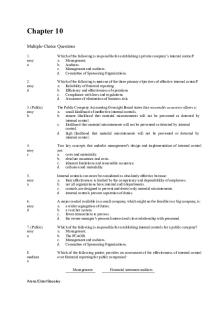
Chapter-10
- 19 Pages
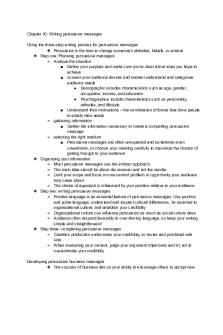
Chapter 10
- 5 Pages
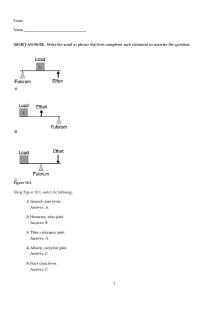
Chapter 10
- 14 Pages

Chapter 10
- 111 Pages
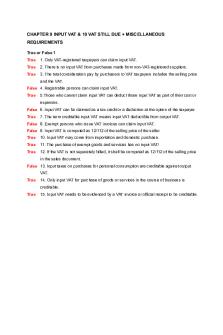
Chapter 10
- 16 Pages
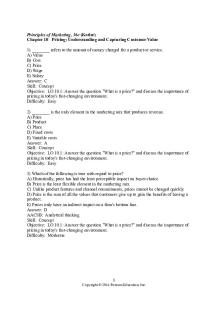
Chapter 10
- 47 Pages
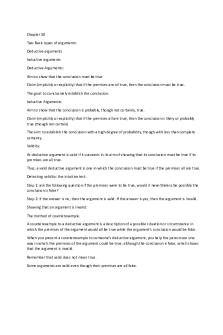
Chapter 10
- 4 Pages
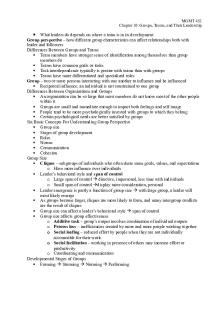
Chapter 10
- 5 Pages
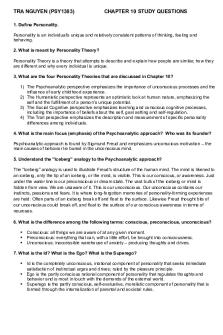
Chapter 10
- 6 Pages

Chapter 10
- 13 Pages

Chapter 10
- 10 Pages

Chapter 10
- 3 Pages

Chapter 10
- 22 Pages
Popular Institutions
- Tinajero National High School - Annex
- Politeknik Caltex Riau
- Yokohama City University
- SGT University
- University of Al-Qadisiyah
- Divine Word College of Vigan
- Techniek College Rotterdam
- Universidade de Santiago
- Universiti Teknologi MARA Cawangan Johor Kampus Pasir Gudang
- Poltekkes Kemenkes Yogyakarta
- Baguio City National High School
- Colegio san marcos
- preparatoria uno
- Centro de Bachillerato Tecnológico Industrial y de Servicios No. 107
- Dalian Maritime University
- Quang Trung Secondary School
- Colegio Tecnológico en Informática
- Corporación Regional de Educación Superior
- Grupo CEDVA
- Dar Al Uloom University
- Centro de Estudios Preuniversitarios de la Universidad Nacional de Ingeniería
- 上智大学
- Aakash International School, Nuna Majara
- San Felipe Neri Catholic School
- Kang Chiao International School - New Taipei City
- Misamis Occidental National High School
- Institución Educativa Escuela Normal Juan Ladrilleros
- Kolehiyo ng Pantukan
- Batanes State College
- Instituto Continental
- Sekolah Menengah Kejuruan Kesehatan Kaltara (Tarakan)
- Colegio de La Inmaculada Concepcion - Cebu
